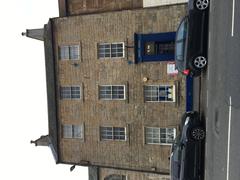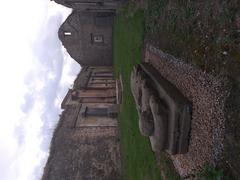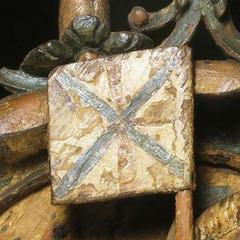Windywa'S Silvermine, Silvermine 300M Sw Of Wester Tartraven
Complete Guide to Visiting Windywa Silvermine in Livingston, United Kingdom
Date: 14/06/2025
Introduction
Nestled approximately 300 meters southwest of Wester Tartraven near Livingston in West Lothian, Windywa Silvermine is a fascinating window into Scotland’s mining legacy. This historic site, often overshadowed by larger industrial centers, preserves the story of early silver mining from the 17th century through the Victorian era. Protected as a Scheduled Monument, Windywa Silvermine offers visitors a unique blend of history, archaeology, and scenic rural landscapes. Whether you are a history enthusiast, nature lover, or casual explorer, a visit to this site provides a rewarding journey into the heart of West Lothian’s industrial heritage. For detailed historical context and updates, authoritative information is available from Historic Environment Scotland and the West Lothian Council Scheduled Monuments.
Table of Contents
- Introduction
- Historical Context and Development
- Archaeological and Industrial Significance
- Economic and Social Impact
- Technological and Geological Features
- Cultural and Heritage Value
- Visiting Windywa Silvermine: Hours, Tickets & Accessibility
- Travel Tips and Nearby Attractions
- FAQ
- Conservation and Research
- Educational and Interpretive Potential
- Relationship to the Surrounding Landscape
- Modern Relevance and Community Engagement
- Conclusion and Call to Action
Historical Context and Development
Windywa Silvermine reflects Scotland’s early industrial ambitions and mineral wealth. The site’s origins date back to the early 17th century, a time of growing interest in mineral extraction. The mine’s establishment coincided with a broader European fascination with silver and its economic importance. Initial operations likely involved both local labor and skilled workers from continental Europe, a common practice in Scottish mining at the time (Historic Environment Scotland).
The area saw renewed mining activity in the late 19th century with the advent of more advanced Victorian-era mining technologies, although production remained modest compared to larger sites elsewhere in the UK.
Archaeological and Industrial Significance
Windywa Silvermine is designated as a Scheduled Monument, highlighting its importance in Scotland’s industrial archaeology (West Lothian Scheduled Monuments). The site preserves features such as mine shaft depressions, spoil heaps, and remnants of processing areas. These landscape features reveal both early modern and Victorian mining practices. The mine is also cataloged by the Royal Commission on the Ancient and Historical Monuments of Scotland (RCAHMS) under references NS97SE34 and NS97SE96.
Windywa Silvermine’s story is closely tied to the broader history of mineral extraction in West Lothian, a region also known for oil shale mining (Livingston History).
Economic and Social Impact
Although never a major industrial center, Windywa Silvermine contributed to the regional economy by providing jobs and resources. During its peak, the mine attracted skilled workers—miners, smelters, and engineers—who formed a specialized local community. The mine’s operations, though relatively brief, complemented agricultural and later oil shale industries in the area.
Technological and Geological Features
West Lothian’s geology includes sedimentary rocks that host valuable minerals such as silver. Early mining at Windywa used manual tools and simple hoisting equipment. Victorian-era operations introduced steam-powered machinery and improved ore processing techniques, reflecting technological advances of the period. The physical remains—shafts, adits, spoil heaps—provide tangible evidence of these evolving methods (Historic Environment Scotland).
Cultural and Heritage Value
Windywa Silvermine is significant in the collective memory of West Lothian’s industrial communities. The site symbolizes the adaptability and resilience of the region’s people. Its legacy lives on in the landscape and in local traditions, forming a key chapter in the area’s transformation from rural villages to centers of industry (Livingston History).
Visiting Windywa Silvermine: Hours, Tickets & Accessibility
Visiting Hours
Open year-round during daylight hours (typically 9:00 AM to dusk), the site is free to access. Since there is no formal visitor center or staff presence, visitors can explore at their own pace.
Tickets and Admission
There is no entrance fee and no tickets are required.
Accessibility
The terrain is uneven, with no paved paths or formal facilities. The site is not suitable for wheelchairs or visitors with limited mobility. Sturdy footwear is recommended.
Guided Tours and Events
Guided walks and talks are occasionally organized by local history groups and the Almond Valley Heritage Trust; check their websites or social media for event schedules.
Travel Tips and Nearby Attractions
Getting There:
- The site is accessible by car via minor rural roads from Livingston.
- Park in Wester Tartraven or nearby lay-bys; walk to the site using established farm tracks.
- Public transport: Livingston North railway station is the nearest major stop; local taxis or cycling routes can be used for the final stretch.
Nearby Attractions:
- Tartraven Castle: Medieval ruins with historical interest (Stravaiging: Tartraven Castle).
- Almond Valley Heritage Centre: Family-friendly museum and farm park with mining exhibits.
- Cairnpapple Hill: Important prehistoric ceremonial site.
- Livingston Village: Conservation area with historic cottages and inns.
Amenities:
Livingston offers a range of accommodations, restaurants, and shops. There are no facilities at the Silvermine itself.
FAQ
Q: What are the visiting hours?
A: The site is open year-round during daylight hours, typically from 9:00 AM to dusk.
Q: Is there an entrance fee?
A: No, entry is free.
Q: Are guided tours available?
A: Occasionally, through local heritage groups or the Almond Valley Heritage Trust.
Q: Is the site wheelchair accessible?
A: No, due to rough terrain and lack of facilities.
Q: How do I reach the site?
A: By car or public transport to Livingston, followed by walking or cycling.
Q: Can I fly a drone at the site?
A: Yes, but follow Scottish drone regulations and avoid disturbing wildlife or private property.
Conservation and Research
As a Scheduled Monument, Windywa Silvermine is legally protected under the Ancient Monuments and Archaeological Areas Act 1979 (Historic Environment Scotland). Ongoing research and community engagement continue to enhance understanding and preservation of the site.
Educational and Interpretive Potential
Although there is no on-site interpretation, the nearby Museum of the Scottish Shale Oil Industry provides context on the region’s mining heritage. Educational partnerships and occasional guided walks further enrich the visitor experience.
Relationship to the Surrounding Landscape
Windywa Silvermine is set amid rolling countryside near Wester Tartraven, with views of historic landmarks like Tartraven Castle and Cairnpapple Hill. The site can be incorporated into longer walks or cycle routes exploring West Lothian’s layered history.
Modern Relevance and Community Engagement
The site remains an important focal point for local identity and heritage. Community-led conservation activities, educational events, and heritage walks ensure ongoing engagement and stewardship.
Conclusion and Call to Action
Windywa Silvermine offers a unique opportunity to explore Scotland’s mining past in a tranquil, scenic setting. With open access, evocative landscape features, and proximity to other historical sites, it is a rewarding destination for anyone interested in industrial history or rural exploration. Plan your visit today, download the Audiala app for guided tours, and follow local heritage organizations for news and events.
Internal Links
Summary of Key Points and Visitor Tips
- Heritage: Windywa Silvermine is a well-preserved example of Scotland’s early mining history, showcasing features from the 17th and 19th centuries.
- Access: Open year-round, free to visit, no tickets or formal facilities.
- Experience: Ideal for self-guided walks, photography, and exploration of rural landscapes.
- Safety: Terrain is uneven and can be muddy; avoid entering mine shafts or fenced areas.
- Nearby Attractions: Tartraven Castle, Almond Valley Heritage Centre, Cairnpapple Hill, and Livingston Village.
- Conservation: Ongoing community and council initiatives help preserve and interpret the site.
- Further Information: Historic Environment Scotland, Livingston History.
References and External Links
- Bathgate Hills Silvermine resource
- Bathgate Old Times
- Historic Environment Scotland
- West Lothian Scheduled Monuments
- Livingston History
- Stravaiging: Tartraven Castle


